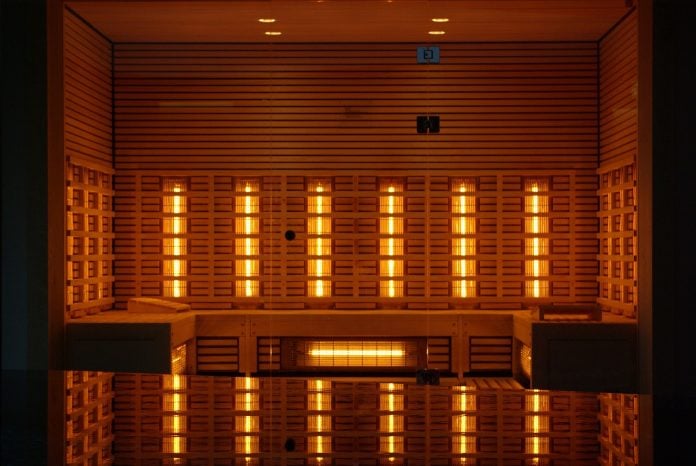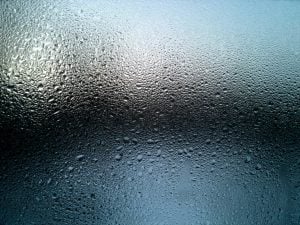
This post may contain affiliate content from which we earn a small commission at no additional cost to you. Read our full disclosure.
Ever wondered what makes your sauna experience top-notch? Well, it all boils down to the materials used. In this guide, we’ll be comparing sauna materials in detail. We’ll thoroughly compare materials like wood vs. glass vs. tile to help you find out which one fits you best.
From the earthy vibes of wood to the sleekness of glass and the practicality of tile, we’ve got the lowdown on what makes each material tick. So, buckle up as we explore the sauna realm and help you pick the perfect match for your relaxation haven!
You can get your personal sauna for your home by just clicking here and for more information, you can check out our detailed review article on saunas. For additional discount click on the coupon below.


Sun Home Saunas
Wooden Warmth
Wooden saunas, with their timeless appeal, bring a touch of nature indoors. The aromatic essence of cedar, hemlock, or pine engulfs the space, creating an intimate connection with the environment.
Wood’s insulating properties contribute to efficient heat retention, ensuring a cozy and comfortable atmosphere. The natural grains and textures of wood contribute to a warm and inviting aesthetic, elevating the sauna experience to a sensory delight.
Glass Elegance

For those who seek a contemporary and open feel, glass saunas present a compelling option. The transparent allure of glass allows for an unobstructed view, making the sauna feel more expansive and connected to its surroundings.
The play of light and shadow through glass panels adds an element of sophistication, transforming the sauna into a modern retreat. However, it’s essential to consider privacy concerns and the potential for heat loss in glass saunas.
Tile Resilience
Tiles, known for their durability and versatility, bring a practical edge to sauna design. Resistant to moisture and easy to clean, tiles are a low-maintenance choice. The vast array of colors, patterns, and textures in tiles offer limitless design possibilities.
While not as inherently insulating as wood, proper insulation can compensate for this, making tiled saunas a robust and visually appealing option for those prioritizing functionality and aesthetics.
Aesthetic Appeal
The aesthetic appeal of a sauna is a key factor influencing its overall ambiance. Wood, with its warm tones and natural beauty, imparts a classic and cozy atmosphere. The earthy fragrance of wood further enhances the sensory experience. Glass, on the other hand, brings a contemporary and sleek look, creating a sense of openness.
The reflective properties of glass can amplify the effects of lighting, adding a touch of glamour. Tiles offer a customizable aesthetic, allowing for diverse design choices, from minimalist to intricate patterns, catering to individual preferences.
One more Question that many people have in their minds is what etiquette should you have before going to a sauna for that you can read our article “Sauna Etiquette: What You Should Know Before You Go”.
Heat Retention and Efficiency
The primary purpose of a sauna is to provide a comforting and therapeutic heat. In this aspect, the choice of material significantly impacts heat retention and overall efficiency.
Wooden saunas, especially those crafted from dense woods like cedar, excel in heat insulation, ensuring that the sauna reaches and maintains the desired temperature efficiently.
Glass saunas while offering a unique aesthetic, may face challenges in heat retention, requiring advanced insulation solutions. Tiled saunas, when well-insulated, strike a balance between heat retention and visual appeal.
Maintenance Considerations
The longevity and condition of a sauna hinge on the ease of maintenance. Wooden saunas, when properly sealed and cared for, can withstand the test of time. Periodic resealing may be necessary to prevent moisture-related issues.
Glass saunas demand diligent cleaning to maintain their transparency and aesthetic allure. Tiles, being inherently resistant to moisture, are relatively easy to clean and maintain, making them a practical choice for those seeking low-maintenance sauna solutions.
Customization Possibilities
The ability to personalize the sauna space adds an extra layer of enjoyment to the overall experience. Wooden saunas, with their natural grains and textures, offer a sense of authenticity and can be customized with various wood finishes.
Glass saunas, while limited in terms of material customization, provide ample opportunities for creative lighting and interior design. Tiles, with their diverse range of colors and patterns, allow for endless customization possibilities, enabling individuals to express their unique style within the sauna.
Ventilation and Air Quality
Ensuring proper ventilation is crucial for maintaining a comfortable and healthy sauna environment. Wooden saunas, with their natural porous properties, allow for good air circulation, preventing a stuffy atmosphere.
The aromatic qualities of certain woods further contribute to a pleasant fragrance. Glass saunas, with their transparent nature, can feel more open but may require additional ventilation mechanisms to ensure optimal air quality.
Tiled saunas, being easy to clean, contribute to maintaining a hygienic space, and proper ventilation systems can be integrated for fresh and invigorating air circulation.
Cost Considerations
The budgetary aspect plays a pivotal role in the decision-making process. Wooden saunas, particularly those crafted from high-quality wood, can be a significant investment.
The cost may vary depending on the type of wood chosen and the craftsmanship involved. Glass saunas, with their modern aesthetic, may have a higher upfront cost, especially if opting for specialized glass materials.
Tiled saunas, while offering versatility and durability, can provide a more cost-effective solution without compromising on aesthetics if selected wisely. Consideration of long-term maintenance costs is also essential to assess the overall financial impact.
Sustainability Factors
In an era where environmental consciousness is paramount, considering the sustainability of sauna materials is crucial. Wooden saunas, especially those made from responsibly sourced and certified wood, align with eco-friendly practices.
The longevity of wood as a renewable resource further enhances its sustainability credentials. Glass saunas may pose challenges in terms of energy consumption and production processes.
Tiled saunas, depending on the type of tiles chosen, can be environmentally friendly, especially if opting for recycled or locally sourced materials. Making an eco-conscious choice aligns the sauna experience with broader sustainability goals, contributing to a harmonious connection with nature.
Wrap-Up (Comparing Sauna Materials: Wood vs. Glass vs. Tile)
In the sauna showdown, wood, glass, and tile each bring their A-game. Wood warms the vibe, offering a cozy retreat. Glass flaunts transparency, inviting light and openness. Tile plays the cool card, and is easy on maintenance.
Pick your sauna champion wisely, balancing warmth, openness, and ease – after all, it’s not just about sweating but enjoying the sauna journey. You can check out our full review of Sun Home Saunas for more sauna information. Get your personal sauna by just clicking here.
If you’re interested, make sure to save yourself some cash with the code below.


Sun Home Saunas
FAQs (Comparing Sauna Materials: Wood vs. Glass vs. Tile)
What is the best material for a sauna floor?
For a sauna floor, the best material is often cedar or redwood. These woods are known for their natural resistance to moisture and ability to withstand high temperatures, making them ideal choices to create a comfortable and durable sauna floor.
What is the best material for a sauna wall?
When it comes to sauna walls, the best material is typically cedar. Cedar is not only visually appealing but also has natural properties that resist both moisture and insects. This makes it an excellent choice for creating sauna walls that are not only sturdy but also contribute to a pleasant sauna experience.
What is the most effective type of sauna?
The most effective type of sauna is the traditional Finnish sauna. It uses dry heat generated by rocks on a heater, creating a steam-free environment. This type of sauna is known for its ability to promote relaxation, improve circulation, and provide a genuine sauna experience that has been enjoyed for centuries.
- Online Vs In-Person Certification Courses: Pros & Cons - April 23, 2024
- Tips for Acing Your Fitness Certification Exam - April 21, 2024
- Balancing Work-Life as a Fitness Trainer: Complete Guide - April 19, 2024
Disclosure: In the spirit of full disclosure, DIYactive.com may be compensated in exchange for featured placement of certain reviews or links on this website. View our full disclosure.



